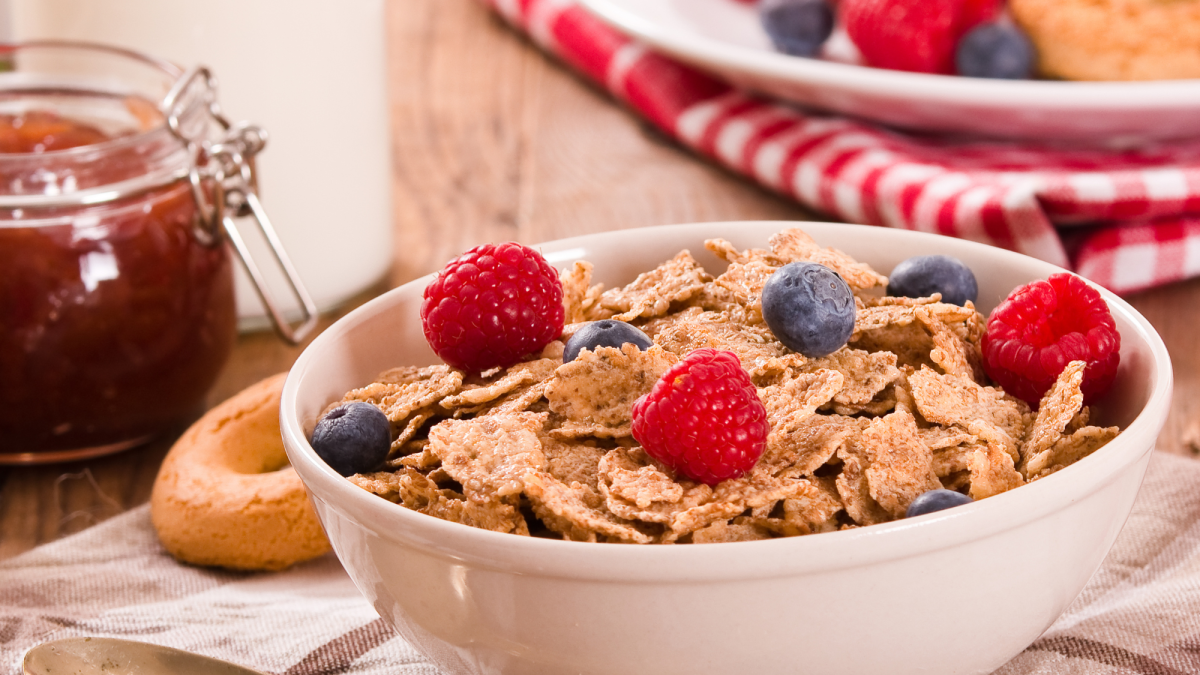Wholegrain cereal and their potential effects on health

Eat healthy, choose Primera Rice
February 24, 2023
[LIVE] THE NATION | 22ND MARCH 2023
March 23, 2023Wholegrain cereal and their potential effects on health
By Dr Shashikala (UCSI University)
There is a large body of evidence to suggest that the inclusion of wholegrains in the diet is beneficial for human health 1,2. Wholegrain cereals, i.e., grains that include the bran, germ, and endosperm, are good sources of vitamins, minerals, dietary fiber, and phytochemicals 1,2. These compounds are mostly present in the outer kernel layers, i.e., the pericarp and aleurone, which are typically removed when the grain is milled, and cereal flour is produced 1.
The intake of high levels of dietary fiber, vitamins and minerals, and important phytochemicals like indoles, polyphenols, carotenoids, and phytosterols is responsible for the potential health-promoting benefit of regular cereal wholegrain consumption 1,2. The relationship between the regular consumption of whole meal products and a reduced risk of non-communicable chronic diseases has been previously established 2,3. The specific food structure and dietary fiber content, combined with the antioxidant and anti-carcinogenic effects of numerous compounds (especially polyphenolic compounds), are well recognized compound in the risk reduction of cardiovascular diseases, obesity, diabetes, and certain types of cancer 1,3.
The benefits of bioactive small molecules
Most research has focused on the health effects of the major constituents of wholegrains (e.g., dietary fiber) 1. However, bioactive small molecules also play a role in the benefits of wholegrain consumption. Polyphenols, for example, are compounds that possess one or more aromatic rings, with one or more hydroxyl groups, and can be categorized into one of five groups (flavonoids, stilbenes, phenolic acids, coumarins, and tannins) 1. Phenolics act as singlet oxygen quenchers and free radical hydrogen donors, which have a protective effect on cell constituents against oxidative damage 4. Among them, anthocyanins are a group of water-soluble flavonoids and are responsible for red, violet, and blue colors in fruits, vegetables, and cereal grains 5,6. Anthocyanins have demonstrated in vitro antioxidant potential, and consumption of foods high in anthocyanins has been linked to a lower risk of chronic diseases 5.
Several commercially relevant cereal grain families contain some distinctly coloured varieties 7. These colours often stem from anthocyanins present in the kernels as one of the primary natural pigments. Wheat, maize, sorghum, barley, rice, and millet all have varieties with significant amounts of anthocyanins in the outer layers of the kernel. Coloured grains rich in anthocyanins have been identified as promising ingredients for the development of wholegrain functional foods.
The role of antioxidants
Free radicals and other reactive species produced in the body under physiological conditions play important roles in regulatory pathways and processes 8. Production of free radicals and other reactive species is generally regulated by cellular defence systems, at a controlled rate. However, if the antioxidant defence system is disturbed and is not working sufficiently, an imbalance occurs in cells towards oxidative stress 2,8. This state has been linked to the development of several diseases including cancers, cardiovascular diseases, hypertension, inflammation, and diabetes 3,8,9.
Dietary antioxidants can mitigate this oxidative stress through several mechanisms, depending on the structure of the molecule. Antioxidants may be efficient free radical scavengers, singlet oxygen quenchers, peroxide inactivators, metal ion chelators, and/or inhibitors of pro-oxidative enzymes 3,8,9. Many phytochemicals in our diet act as antioxidants. Anthocyanins are one of these phytochemicals. Indeed, anthocyanins have even demonstrated a greater antioxidant activity than vitamins C and E in vitro 10. However, the exact mechanism that governs their antioxidant is still under debate and requires further studies 11. Despite this mechanistic uncertainty, numerous in vivo and in vitro studies have demonstrated antioxidant acticities of anthocyanins 9,11.
Wholegrain may reduce risk of chronic disease
Consumption of wholegrain cereals has been shown to protect against obesity, diabetes, cardiovascular disease, and cancer 1,3. Part of these health benefits can be ascribed to the high dietary fiber content. Although attempts have been made to investigate the specific role of the individual compounds, the specific health-promoting effect of each component has not yet been fully elucidated 2,3. According to Malin et al. (2018), the mechanism of action through which wholegrains lower the diabetes risk involves a reduced post-prandial blood glucose and peripheral insulin resistance that are statistically linked to enhanced metabolic flexibility 16. This mechanism is a property of soluble/viscous fiber.
However, the major wholegrain intake worldwide is based on wholegrain wheat, which is low in this type of fiber. Randomized controlled trials acertain also that the consumption of wholegrains improve blood glucose control, may reduce fasting insulin levels, and reduces insulin resistance 9,12,13, indicating that a wholegrain diet may increase insulin sensitivity, which controls blood sugar levels. The physical nature of the wholegrain, as well as its level of processing, can affect the metabolic response to its intake. An early study suggested that the insulin responses increase as follows: Wholegrains < cracked grains < coarse flour < fine flour 15, therefore, there is an inverse correlation between the forms of wholegrain and the impact on glucose metabolism.
There are several mechanisms mentioned by which consumption of wholegrains may contribute to weight management. Firstly, the fact that wholegrain products possess a reduced energy density (kilocalories/unit weight). Secondly, their higher content in non-digestible carbohydrates compared to refined cereal foods 16,12, which increases satiety and therefore, the feelings of fullness 13.
Choose wholegrain foods
The consumption of wholegrains and wholegrain products has gained popularity because of their potential protection against cancer. This antioxidant effect is due to their phytochemicals that combat oxidative stress 17. Wholegrain phytochemicals can regulate cellular signal transduction pathways and hence affect cancer cell behaviors such as proliferation, apoptosis, and invasion 18. Bran antioxidants may concur to cellular protection while preventing oxidation damage at the cellular level. The potential of phenolic acids to inhibit cancer was attributed to the reduction in oxidative damage to cells and cell components 42,19,20.
Cereal grains represent one of the major sources of human food and nowadays, their production has increased to fulfill the needs of the world’s population. Among wholegrains, wheat and rice are the most popular and contribute significantly to the human diet. Wholegrains possess great nutritional and bioactive properties due to their fractions, bran and germ, that comprise unique health-promoting bioactive components. The evidence of health benefits in human intervention studies, as well as a World Health Organization report for 2012–2016, supports the dietary consumption of wholegrains and whole-grain foods.
References :
Agriculture, Forestry and Fishery Statistics. 2016 Edition. Available online: https://ec.europa.eu/eurostat/web/products-statistical-books/-/KS-FK-16-001.
- Watson, R.R., Preedy, V.R. and Zibadi, S. 2014. Wheat and Rice in Disease Prevention and Health: Benefits, Risks and Mechanisms of Whole Grains in health Promotion; Academic Press: Cambridge, MA, USA. ISBN 978-0-12-404604-7.
Björck, I., Östman, E., Kristensen, M., Mateo Anson, N., Price, R.K., Haenen, G.R.M.M., Havenaar, R., Bach Knudsen, K.E., Frid, A., Mykkänen, H., et al. 2012. Cereal grains for nutrition and health benefits: Overview of results from in vitro, animal and human studies in the HEALTHGRAIN project. Trends in Food Science & Technology. 25: 87–100.
He, M., van Dam, R.M., Rimm, E., Hu, F.B. and Qi, L. 2010. Whole-grain, cereal fiber, bran, and germ intake and the risks of all-cause and cardiovascular disease-specific mortality among women with type 2 diabetes mellitus. Circulation 121:2162–2168.
Fardet, A., Rock, E. and Rémésy, C. 2008. Is the in vitro antioxidant potential of whole-grain cereals and cereal products well reflected in vivo? Journal of Cereal Science 48:258–276.
Gong, L., Cao, W., Chi, H., Wang, J., Zhang, H., Liu, J. and Sun, B. 2018. Whole cereal grains and potential health effects: Involvement of the gut microbiota. Food Research International 103:84–102.
Prevention and Control of Noncommunicable Diseases in the European Region: A Progress Report. Available online: http://www.euro.who.int/en/health-topics/noncommunicable-diseases/ncd-backgroundinformation/ prevention-and-control-of-noncommunicable-diseases-in-the-european-region-a-progressreport
Itagaki, S., Kurokawa, T., Nakata, C., Saito, Y., Oikawa, S., Kobayashi, M., Hirano, T. and Iseki, K. 2009. In vitro and in vivo antioxidant properties of ferulic acid: A comparative study with other natural oxidation inhibitors. Food Chemistry 114:466–471.
Rukkumani, R., Aruna, K., Varma, P.S. and Menon, V.P. 2004. Influence of ferulic acid on circulatory prooxidant-antioxidant status during alcohol and PUFA induced toxicity. Journal of Physiology and Pharmacology 55:551–561.
Fardet, A. 2010. New hypotheses for the health-protective mechanisms of whole-grain cereals: What is beyond fibre? Nutrition Research Reviews 23:65–134.
Nayak, B., Liu, R.H. and Tang, J. 2015. Effect of Processing on Phenolic Antioxidants of Fruits, Vegetables, and Grains—A Review. Critical Reviews in Food Science and Nutrition 55:887–918.
Slavin, J., Tucker, M., Harriman, C. and Jonnalagadda, S.S. 2013. Whole Grains: Definition, Dietary Recommendations, and Health Benefits. Cereal Foods World 58:191–198.
Jonnalagadda, S.S., Harnack, L., Hai Liu, R., McKeown, N., Seal, C., Liu, S. and Fahey, G.C. 2011. Putting the Whole Grain Puzzle Together: Health Benefits Associated with Whole Grains—Summary of American Society for Nutrition 2010 Satellite Symposium. The Journal of Nutrition 141: 1011S–1022S.
Malin, S.K., Kullman, E.L., Scelsi, A.R., Haus, J.M., Filion, J., Pagadala, M.R., Godin, J.-P., Kochhar, S., Ross, A.B. and Kirwan, J.P. 2018. A whole-grain diet reduces peripheral insulin resistance and improves glucose kinetics in obese adults: A randomized-controlled trial. Metabolism 82:111–117.
Heaton, K.W., Marcus, S.N., Emmett, P.M. and Bolton, C.H. 1988. Particle size of wheat, maize, and oat test meals: Effects on plasma glucose and insulin responses and on the rate of starch digestion in vitro. The American Journal of Clinical Nutrition 47:675–682.
Giacco, R., Costabile, G., Della Pepa, G., Anniballi, G., Griffo, E., Mangione, A., Cipriano, P., Viscovo, D., Clemente, G., Landberg, R., et al. 2014. A whole-grain cereal-based diet lowers postprandial plasma insulin and triglyceride levels in individuals with metabolic syndrome. Nutrition, Metabolism and Cardiovascular Diseases 24:837–844.
Masisi, K., Beta, T. and Moghadasian, M.H. 2016. Antioxidant properties of diverse cereal grains: A review on in vitro and in vivo studies. Food Chemistry 196:90–97.
Chen, H. and Liu, R.H. 2018. Potential Mechanisms of Action of Dietary Phytochemicals for Cancer Prevention by Targeting Cellular Signaling Transduction Pathways. Journal of Agricultural and Food Chemistry 66:3260–3276.
Dai, J. and Mumper, R.J. 2010. Plant phenolics: Extraction, analysis and their antioxidant and anticancer properties. Molecules 15:7313–7352.





